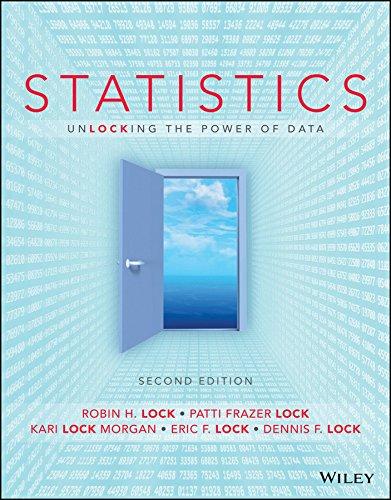Testing (H_{0}: p_{1}=p_{2}) vs (H_{a}: p_{1}>p_{2}) using (hat{p}_{1}-hat{p}_{2}=0.45-0.30=0.15) with each of the following sample sizes: (a) (hat{p}_{1}=9
Question:
Testing \(H_{0}: p_{1}=p_{2}\) vs \(H_{a}: p_{1}>p_{2}\) using \(\hat{p}_{1}-\hat{p}_{2}=0.45-0.30=0.15\) with each of the following sample sizes:
(a) \(\hat{p}_{1}=9 / 20=0.45\) and \(\hat{p}_{2}=6 / 20=0.30\)
(b) \(\hat{p}_{1}=90 / 200=0.45\) and \(\hat{p}_{2}=60 / 200=0.30\)
(c) \(\hat{p}_{1}=900 / 2000=0.45\) and \(\hat{p}_{2}=600 / 2000=0.30\)
The same sample statistic is used to test a hypothesis, using different sample sizes. In each case, use StatKey or other technology to find the p-value and indicate whether the results are significant at a 5\% level. Which sample size provides the strongest evidence for the alternative hypothesis?
Step by Step Answer:

Statistics, Enhanced Unlocking The Power Of Data
ISBN: 9781119308843
2nd Edition
Authors: Robin H Lock, Patti Frazer Lock, Kari Lock Morgan, Eric F Lock, Dennis F Lock





